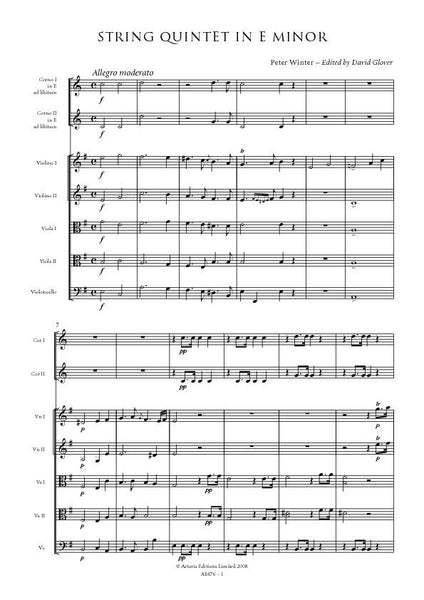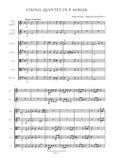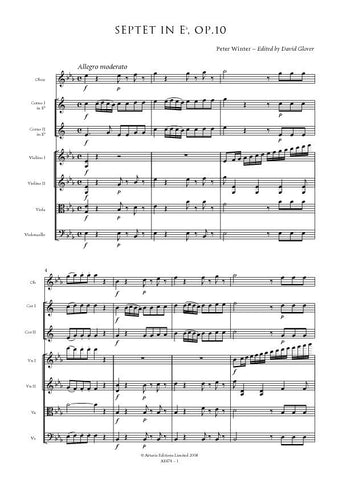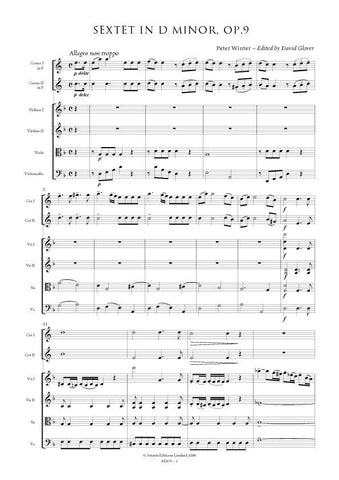Details
|
Peter Winter (1754-1825) is best known as an opera composer. Growing up at the Mannheim court, Winter was able to study with many of the court musicians although his formal composition studies seem to have been minimal. After the electoral court moved to Munich, Winter became director of the orchestra there. Unstable economic and political conditions in Munich reduced the demand for music at home and allowed him to compose operas for major centres such as Vienna, Milan, Paris, and London. Winter's major chamber works include ten quartets, four quintets, three sextets, a septet and an octet. These works fall into two groups. The first comprises works characterized by a melody-dominated texture, where the melody is assigned to a single instrument, usually the violin. The virtuosic nature of some of these works points to their having been composed for specific performers. The second group is written in a conversational style and includes some of the string quartets, the op. 6 string quintets, the sextets, the Septet and the Octet. Many of the larger works in this group include substantial parts for the horn, an instrument of which Winter was particularly fond. The String Quintet in E minor, published sometime between 1801 and 1807, grows out of the tradition of the quatuor brillant, where the violins function as solo instruments. As well as carrying most of the melodic material, the violinists are given many opportunities to display virtuosity. The first violin has numerous passages well above the staff, including a range up to e'''', difficult double-stop passages, extended playing high on the G string, and fast runs and arpeggios. The second violin part is lower and somewhat simpler, but still contains virtuosic elements, such as double-stop passages, difficult arpeggios, and constant passagework. The lower instruments are mostly relegated to an accompanying role. The quintet consists of two movements, a sonata-form first movement and a rondo finale. Missing from the work is a slow middle movement, unless the Adagio interlude in the finale is considered to be the displaced second movement. The quintet is provided with two ad libitum horn parts. Unlike the virtuosic horn writing in Winter's sextets and septet, these horn parts resemble orchestral horn parts in merely reinforcing the harmony and providing colour.
|








